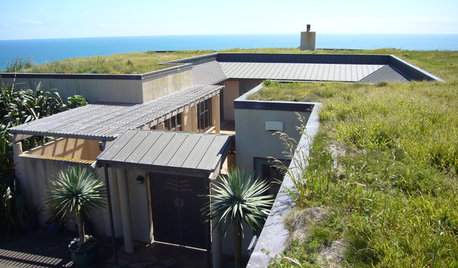Grow deep roots, reduce salt, and reduce watering
strawchicago z5
11 years ago
Related Stories

MOST POPULAREasy Green: 23 Ways to Reduce Waste at Home
Pick from this plethora of earth-friendly ideas to send less to the landfill and keep more money in your pocket
Full Story
EARTH DAYGrow a Beautiful Garden With Ecofriendly Greywater
Reducing home water waste means lower bills and a healthier planet. Here's how to set up a greywater home irrigation system that can help
Full Story
FEEL-GOOD HOMERejuvenate Your Home With Deep-Rooted Traditions
Give the subtle energies and spiritual side of your home some attention, and watch newfound calm and beauty blossom
Full Story
SPRING GARDENINGHow to Grow a Rose Garden in Pots
Everything can come up roses, even without a plot of soil in sight. This step-by-step guide to growing roses in containers shows you how
Full Story
GREEN BUILDINGLiving Roofs Put Down Roots
No longer solely the domain of hippies — or hobbits — a green roof can be a hardworking partner in making your house sustainable
Full Story
ARCHITECTURERoots of Style: The Eclectic American Foursquare
The turn-of-the-20th-century style transitioned U.S. residential architecture from the Victorian era to the modern age
Full Story
GARDENING GUIDES9 Low-Growing Hedges That Make Good Neighbors
Define garden areas or borders without blocking the view, with these evergreen shrubs that take kindly to trimming
Full Story
GARDENING GUIDESYes, You Can Grow an Edible Garden on a Hot, Dry Site
Difficult garden spots don’t need to deter you from planting trees, herbs and other delicious food plants
Full Story
FARM YOUR YARDHow to Grow Vegetables in Containers
Get glorious vegetables and fruits on your patio with a pro’s guidance — including his personal recipe for potting mix
Full Story
EDIBLE GARDENSHow to Grow Your Own Sweet Summer Crops
This guide will help any gardener get started on growing the freshest warm-season veggies and berries for summer
Full StoryMore Discussions










sandandsun
strawchicago z5Original Author
Related Professionals
Middle River Landscape Architects & Landscape Designers · Hartford Landscape Contractors · Stamford Landscape Contractors · Cincinnati Landscape Contractors · Lake Worth Landscape Contractors · Ocoee Landscape Contractors · Peoria Landscape Contractors · Tigard Landscape Contractors · League City Swimming Pool Builders · Lincoln Siding & Exteriors · Loveland Siding & Exteriors · Oregon City Siding & Exteriors · Puyallup Siding & Exteriors · Riverside Siding & Exteriors · South Windsor Siding & Exteriorsstrawchicago z5Original Author
roseseek
sandandsun
strawchicago z5Original Author
anntn6b
roseseek
harmonyp